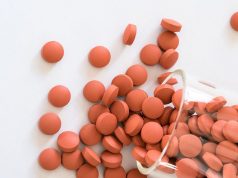In patients with type 1 diabetes, correlation only seen for those in the highest tertile of HbA1c
MONDAY, Nov. 7, 2016 (HealthDay News) — For patients with type 1 diabetes (T1D), the correlation between pro-protein convertase subtilisin/kexin type 9 (PCSK9) and low-density lipoprotein cholesterol (LDL-C) is only seen in the highest tertile for hemoglobin A1c (HbA1c), according to a study published online Nov. 2 in Diabetes, Obesity and Metabolism.
Stéphanie Laugier-Robiolle, from the CHU Poitiers in France, and colleagues examined the correlation between circulating PCSK9 and metabolic parameters in T1D. Plasma PCSK9 levels were measured in 195 patients with T1D (mean age, 38.8 years) who were free from lipid-lowering agents.
The researchers observed a positive correlation between plasma PCSK9 and LDL-C, triglycerides, apolipoprotein B, HbA1c, systolic and diastolic blood pressure, and body mass index. PCSK9 concentration correlated independently with HbA1c and LDL-C in multivariate analysis. After classification of patients by HbA1c tertiles, PCSK9 was only associated with LDL-C in the highest HbA1c tertile (P = 0.0006), while there was no association in the lowest and intermediate tertiles.
“This study suggests that good glycemic control abolishes the positive relationship between PCSK9 and LDL-C in patients with T1D,” the authors write. “However, the underlying molecular mechanisms remain to be established.”
Full Text (subscription or payment may be required)
Copyright © 2016 HealthDay. All rights reserved.








